Ned and Anna DeLoach: Image Search or Search Image?
Search Image or Image Search? We batted the terms around for a while because they both characterize our work. In biology, the term “search image” refers to a set of visual cues predators use to identify cryptic prey. Naturalists have usurped the term to define their ability to rediscover more easily a camouflaged animal once it has been observed in the wild, enabling the mind’s eye to grasp the nuance of its nature. What a kick it is to find an animal that natural selection has crafted over the eons to not be found! The oceans just happen to be brimming with such creatures, many are life forms no one has even imagined existed. We are so lucky to be among the first generations to freely swim with the fishes and to explore a long hidden world, ripe for discovery.
Ned and I hunt for marine fishes and invertebrates to photograph for the series of marine life identifications guides Ned co-authors with Paul Humann. So, searching for underwater images is what we do. We often use search images, but in most instances, our best allies are local naturalist dive guides and good old fashioned luck. We feel strongly that we owe it to our subjects to present them in their best light. Our images are primarily portraits that, if all goes right, show an animal at a pleasing angle, in full focus and in its natural habitat with its distinguishing characteristics clearly displayed.
Digital photography is an impressive new tool for documenting marine wildlife. Even though an unknown animal can’t be given species status from a photograph, an image does establish that a new species exists and indicates where it might be found. Ned recently switched from a Canon 5D to the Nikon D800 to gain extra megapixels for cropping rather than enlargements. He shoots almost exclusively with a 50 or 60mm micro lens using both manual exposure and focus, and a single Ikelite strobe attached to an Ikelite housing. The idea is to be stripped down to the basics and ready for the unexpected. I carry a Sony A1U video camera in a Gates housing, mainly to record a species or its behavior as reference for writing our marine life columns in Alert Diver and Scuba Diving magazines. We also post two blogs: Marine Life Blog, a photo diary of recent experiences underwater, hosted by our company, New World Publications, and the BlennyWatcher Blog, where we share unusual marine life observations and related eclectic musings.
Our selection of images for Full Frame represents some of our favorite discoveries from the past - Anna and Ned DeLoach.
Editors note: Anna and Ned are going to be writing the monthly “Blennywatcher Diary” column for us here on Wetpixel. Please stay tuned for details and the first instalment early next month.
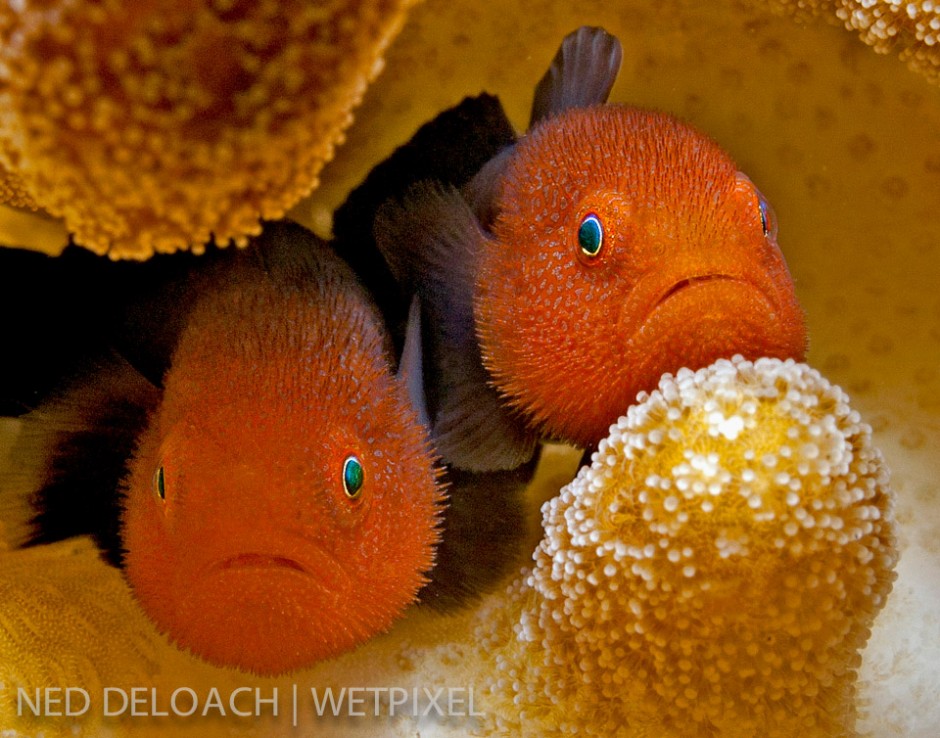
A pair of Redhead Coralgobies, (Paragobiodon echinocephalus), stare out from their Frisbee-sized coral home like puppies in a pound. The pair initiated my quest to track down and photograph as many coral gobies as I could find. Ambon, Indonesia.
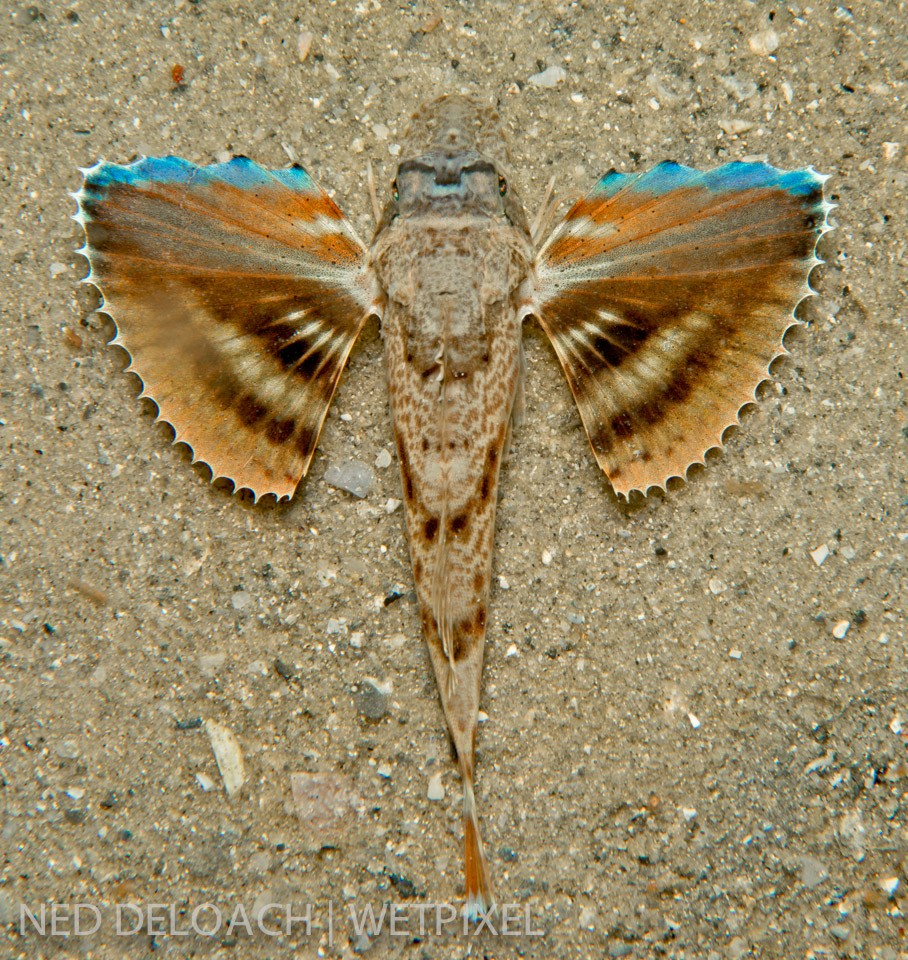
Not much more than an inch in length, a juvenile Blue Searobin, (Prionotus punctatus), which in a few months will grow to a foot in length, would from time to time spread its pectoral-fins in the hope of frightening me away.
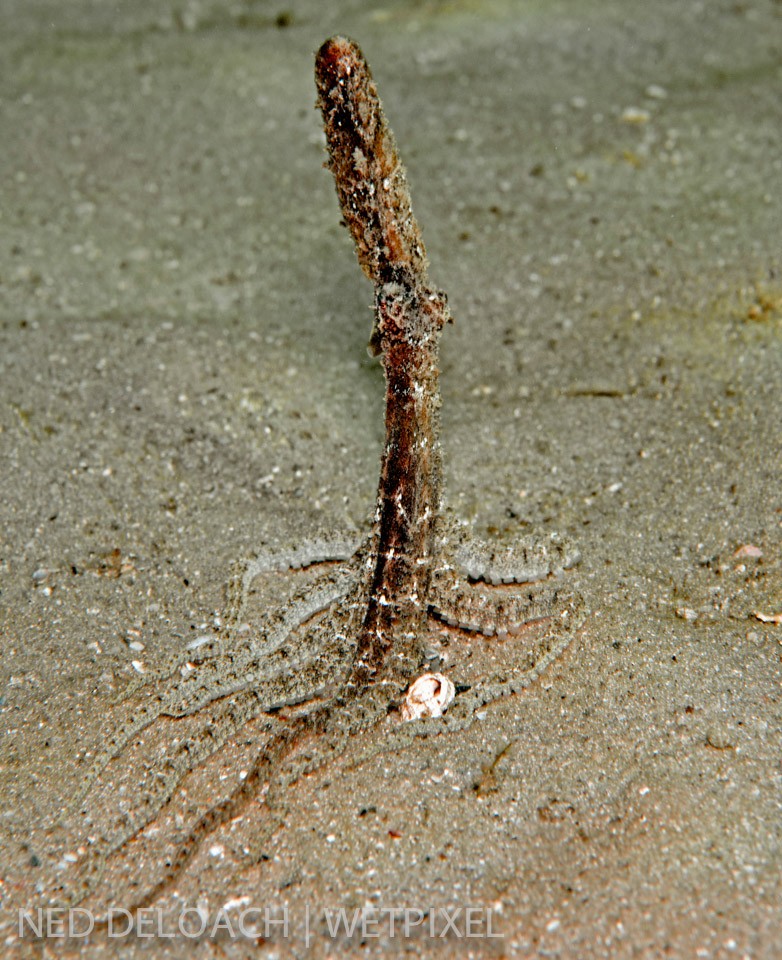
An Atlantic Longarm Octopus, (Octopus defilippi) nonchalantly goes about its business hunting the shallow sand among the dancing feet of swimmers for an hour. Occasionally it stretched its malleable body into what I call a "slim Jim".
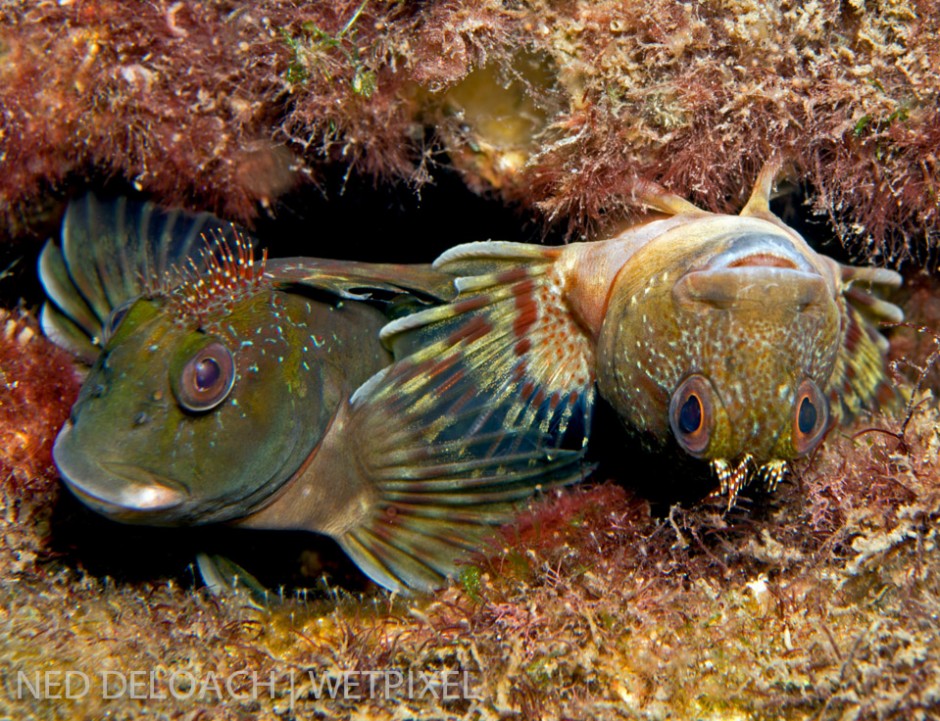
Egg-laying fishes are typically reproductively active during the early morning hours. Anna found this pair of Molly Miller blennies, (Scartella cristata), a foot below the surface, laying and fertilizing a nest of bubble-gum pink eggs.

Via Facebook, Graham Abbott of Diving4Images shared his sighting and photograph of what appears to be a new goby inhabiting tennis-ball-sized colonies of bryozoans.
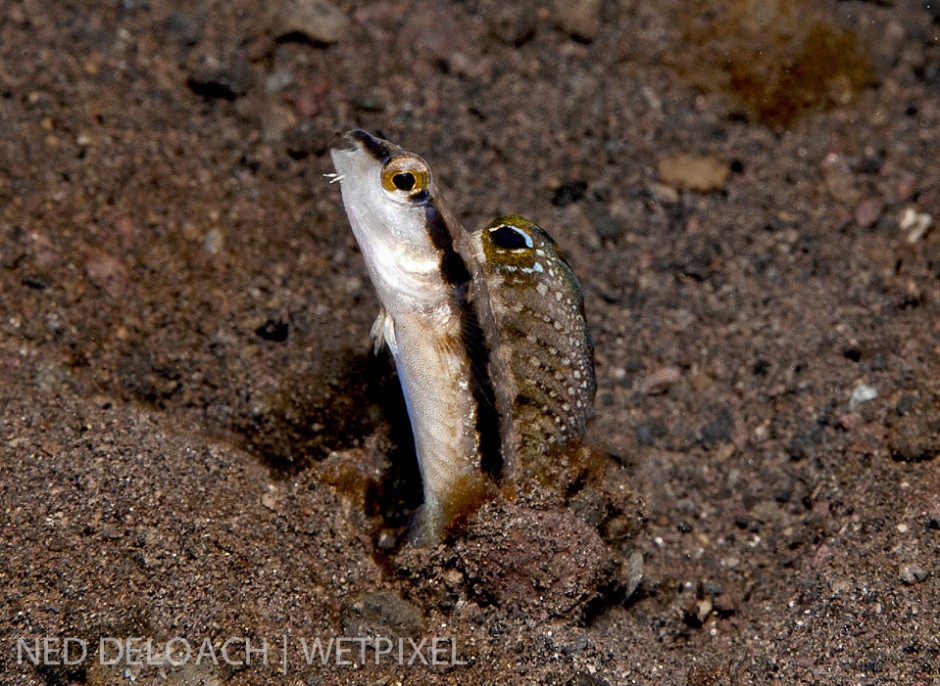
It takes nearly fifty minutes at fifty feet before the head of an undescribed fangblenny pokes back up from the hole where I spooked it.
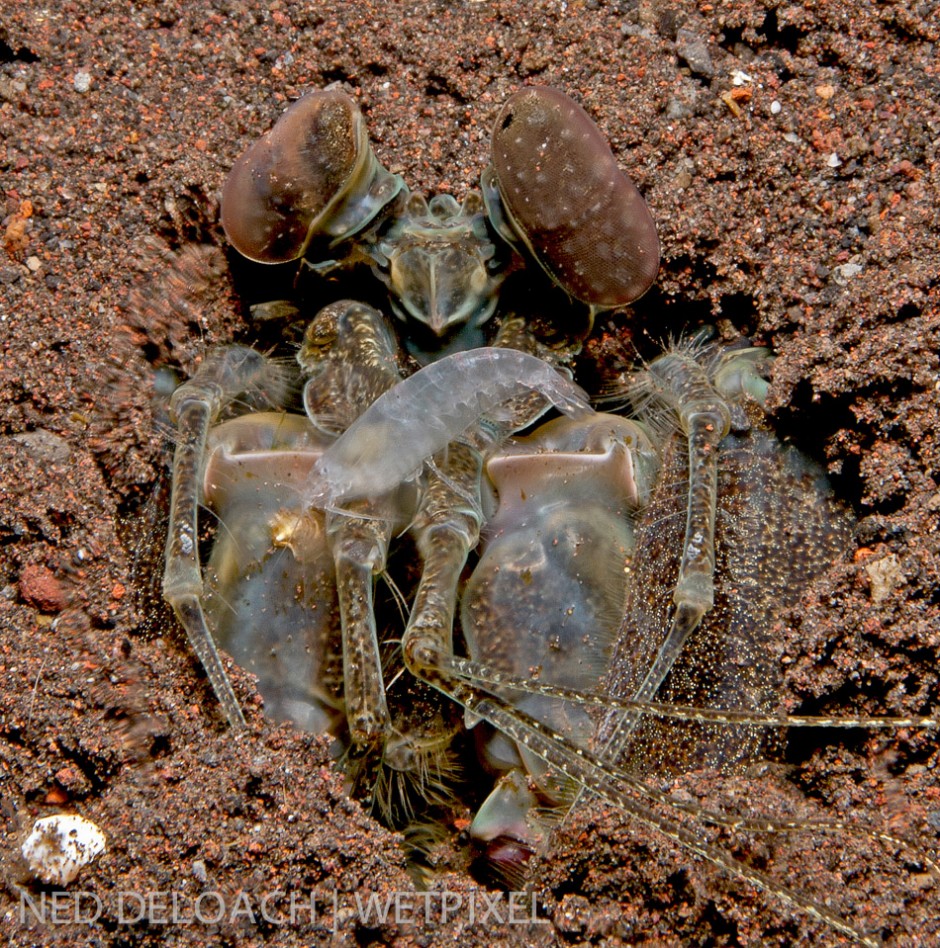
We found an undescribed snapping shrimp living inside the burrow of a mantis the size of my fist. The hole owner sports an attitude and set of laser-fast, razor-sharp claws to match.
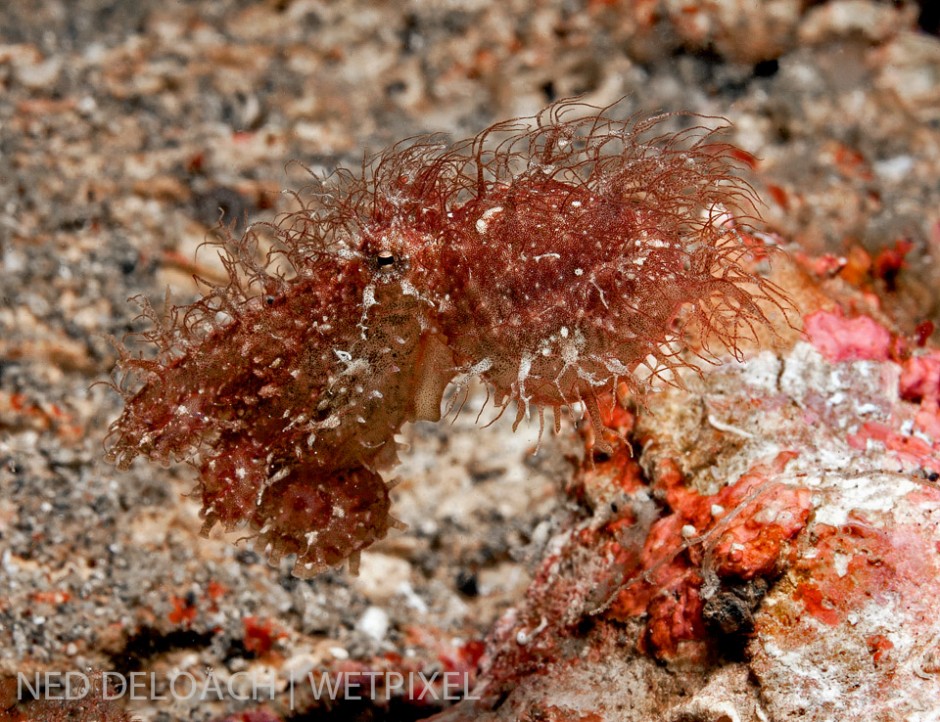
We had been searching for this for over 12 years. No larger than my thumb and a master of camouflage, the legendary Hairy Octopus finally turns up. Lembeh Strait, Indonesia.
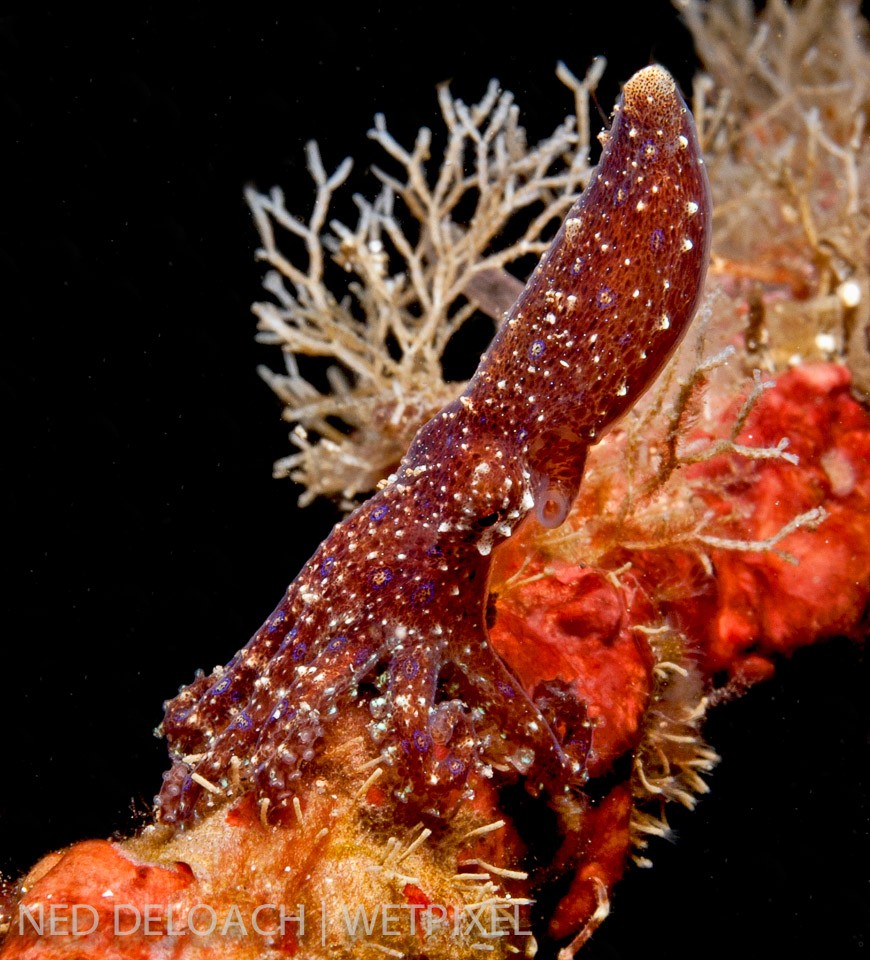
Surprisingly, few blue-ringed octopus species have been scientifically described. This seems to be yet another candidate awaiting species status. Lembeh Strait, northeastern Sulawesi, Indonesia.
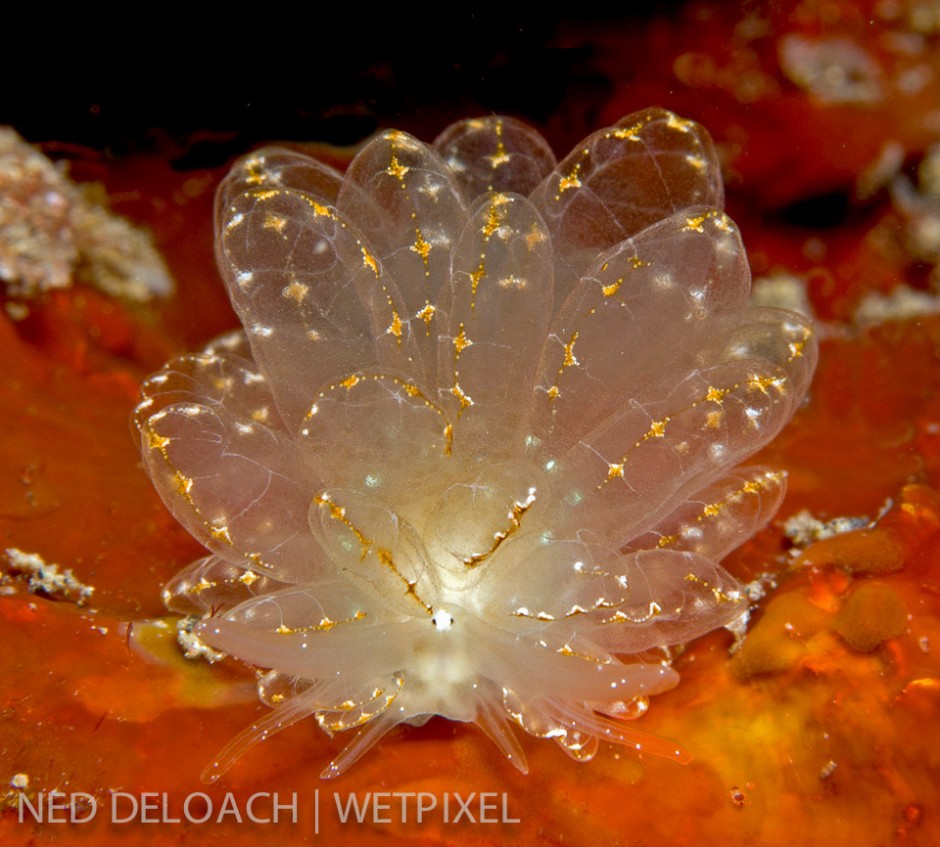
An Elegant Sapsucking Slug, (Cyerce elegans), racing slug-fashion across a bed of encrusting sponge showcases nature at its best. Lembeh Strait, northeastern Sulawesi, Indonesia.
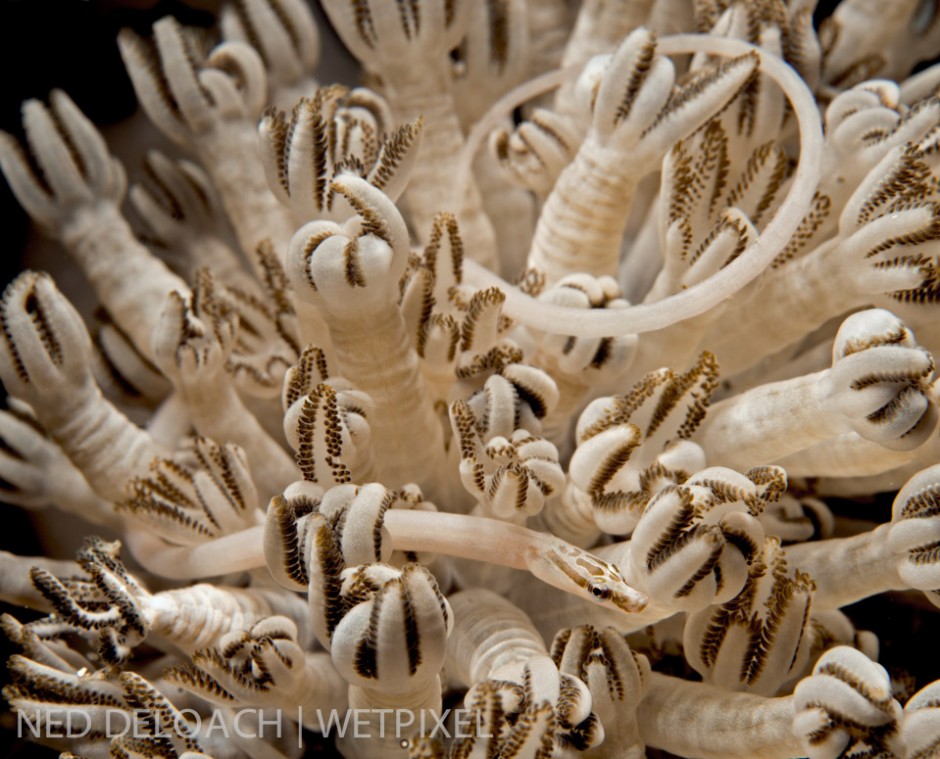
Twelve years of critter hunting in Lembeh Stait and we're only scratching the surface. A match-stick thin Barred Xenia Pipefish, (Siokunichthys bentuviai), makes an appearance.

The Ambon channel current also carries the two-inch worm larvae of a tube-dwelling anemone searching for a place to settle.

Sixty-five feet down at 9:30 at night somewhere near the center of Ambon Harbor's shipping channel I find a soccer ball-sized jellyfish, (Versuriga anadyomene), glowing like a jack-o-lantern in the flash of my strobe. Ambon, Indonesia.
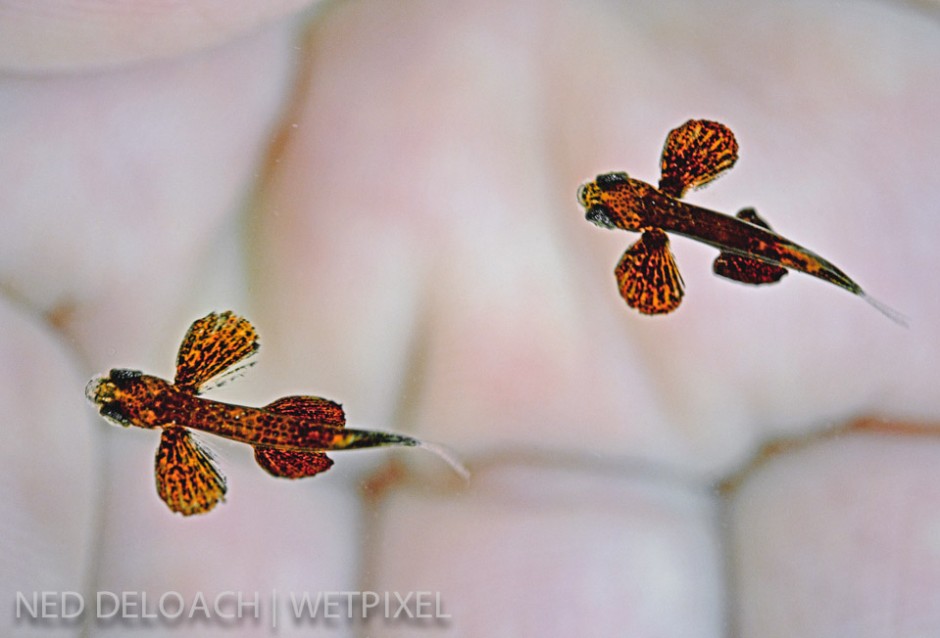
Two flying fish in Anna's hand. Bermuda.

A cluster of Twotone Dartfish, (Ptereleotris evides), is an anomaly. These eye-catching plankton-pickers typically hover alone or in loose pairs a few feet above small hiding holes in the bottom where they dart when threatened.
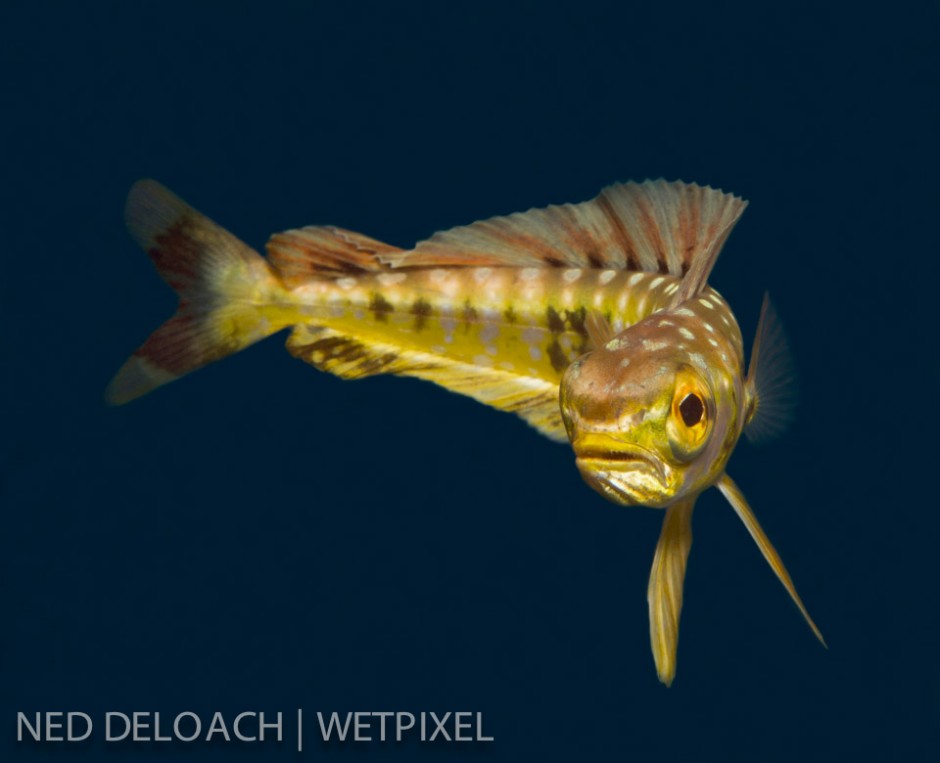
One of my favorite images of 2012: Chris Flook and I caught this three-inch juvenile Dolphinfish, (Coryphaena hippurus) posing with the same bravado as a thee-foot adult.
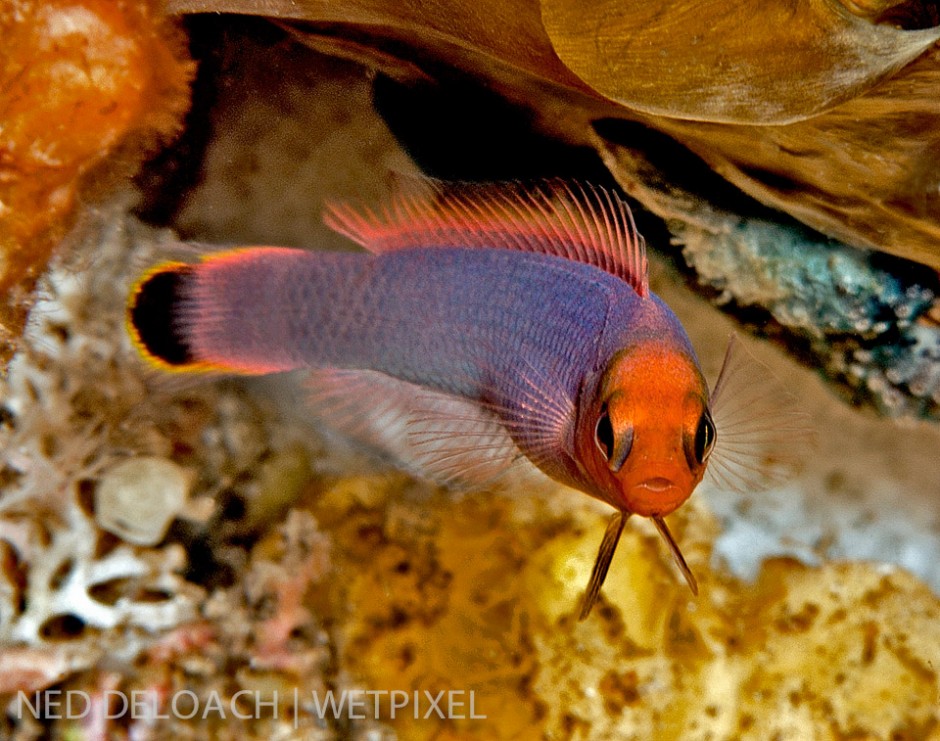
Raja Ampat must be the epicenter of Dottybacks. The secretive fish from the Indo-Pacific family lurk in the shadows of coral walls and outcroppings only occasionally stopping to peek out for a second or two.
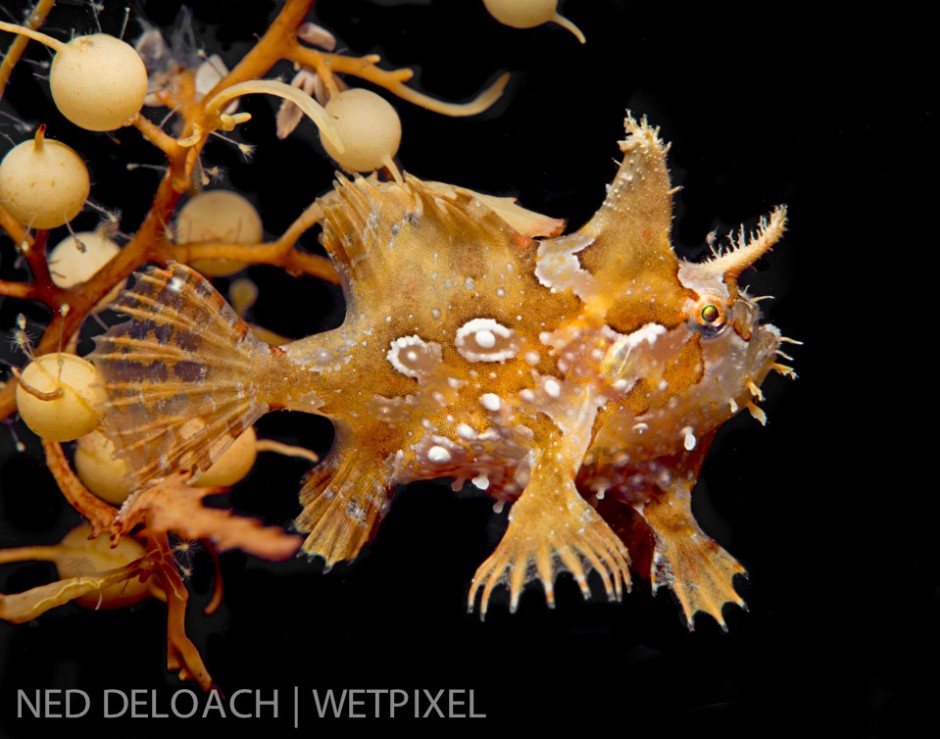
To date, I've photographed 43 of the 173 animals known to inhabit floating rafts of Sargassum. The Sargassumfish, (Histrio histrio), is the most iconic inhabitant of the dense vegetation. Bermuda.
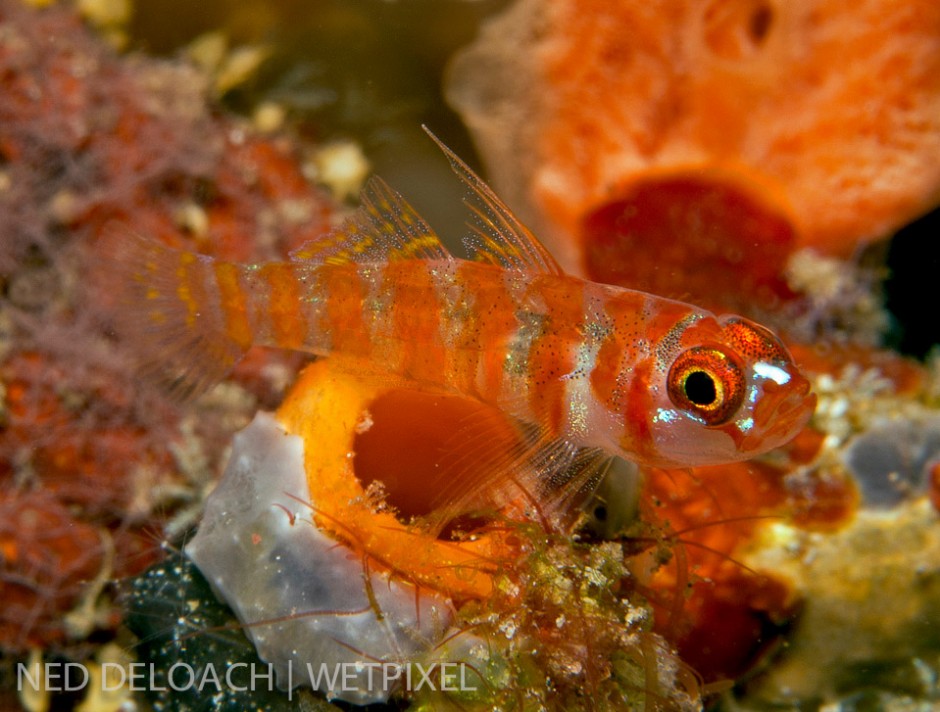
I've been attempting to find and photograph a Candycane Dwarfgoby,(Trimma cana), ever since I first saw an image of the little beauty some years back. Halmahera, Indonesia.
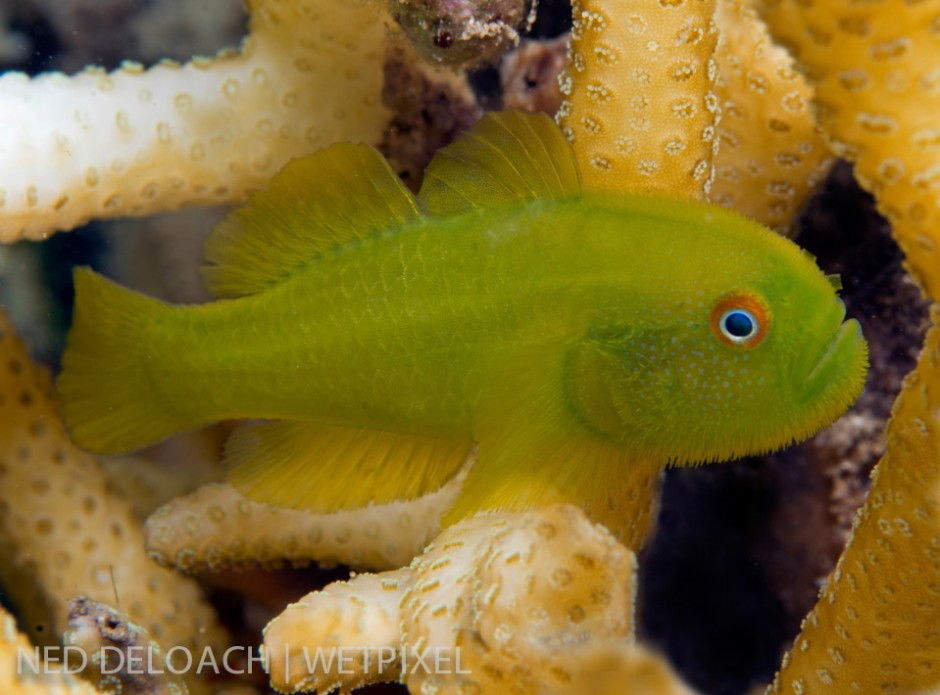
Interestingly the Golden Coralgoby, (P. xanthosoma), isn't always golden. During the hour it took to get a clear shot, one of the pair I was observing slowly transforms from yellow to emerald green.
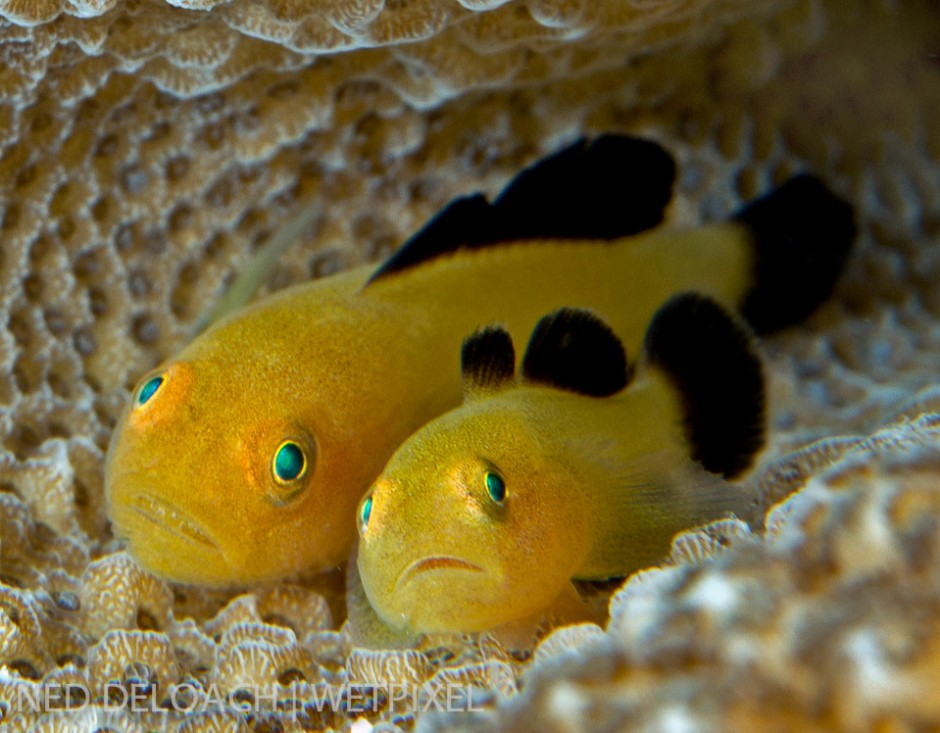
Just when I think that cute can't get any cuter we find a pair of Blackfin Coralgobies, (P. lacunicolus). Ceram, Indonesia.